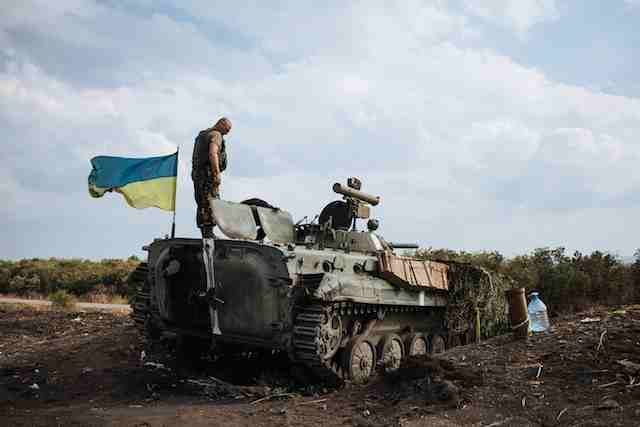SUMMARY
This is AI generated summarization, which may have errors. For context, always refer to the full article.

KIEV, Ukraine – Tension is again mounting in Ukraine after a weekend rocket assault on the strategic government-held port city of Mariupol that left 30 dead and 95 injured, as separatists threatened a new offensive.
Here are key dates in the conflict since pro-Moscow separatists launched an uprising that the Organization for Security and Cooperation in Europe (OSCE) estimates has killed more than 5,000 people since April 2014.
2014
April 6: Pro-Moscow demonstrators seize government buildings in towns and cities in Ukraine’s Russian-speaking east, including Donetsk and Lugansk.
April 13: Kiev announces the launch of an “anti-terrorist” operation in the east.
May 11: Voters call for independence in referendums in Lugansk and Donetsk, rejected as illegitimate by Kiev and the West.
May 25: Ukraine’s presidential election is won by Petro Poroshenko.
June 27: The EU and Ukraine sign the association agreement whose rejection had sparked the initial unrest.
July 17: Malaysia Airlines flight MH17 is shot down over rebel-held territory, killing 298 people.
July 29: The EU and the United States broaden sanctions on Russia.
August 25: Rebels mount a counter-offensive in the southeast, reportedly backed by Russian troops and heavy weapons.
September 5: Ceasefire signed in Minsk but violence continues.
October 26: Pro-Western parties win the most seats in an election boycotted in the east.
November 2: Separatists in eastern Ukraine vote in Russian-backed leadership elections that Kiev and the West refuse to recognise.
November 12: NATO accuses Russia of sending fresh columns of tanks, troops and military hardware into Ukraine.
December 9: A new ceasefire is declared as part of a surprise agreement between Kiev and the separatists.
December 23: Ukraine drops its non-aligned status, allowing it to possibly join NATO, a move Moscow deems “absolutely counterproductive.”
December 24: A new round of talks is held in Minsk between Kiev, Moscow, the pro-Russian separatists and OSCE envoys. An exchange of prisoners follows but the negotiations get bogged down.
2015
January 13: A rocket slams into a bus carrying civilians, killing 13, close to a Ukrainian army checkpoint in Volnovakha, south of Donetsk.
January 19: Kiev says rebels have been reinforced with Russian weapons and almost 700 soldiers. Moscow denies the claim.
January 20: Ukraine accuses Russian forces of attacking its soldiers after crossing the border. Poroshenko cuts short a visit to Davos due to the “worsening situation” in the east.
January 21: Poroshenko says there are more than 9,000 Russian soldiers in eastern Ukraine to back up the separatists.
In Berlin, foreign ministers from France, Germany, Russia and Ukraine call for an end to the fighting and a withdrawal of heavy weapons.
January 22: Ukrainian troops pull out of most of Donetsk airport on the same day that around 40 people are killed, including eight in a trolleybus shelling in Donetsk.
January 24: A rocket attack leaves 30 people dead in the strategic port city of Mariupol, heightening fears of an imminent rebel offensive against the last government-held city in the separatist east.
January 25: Poroshenko chairs an emergency security meeting as US President Barack Obama pledges to intensify pressure on Russia over the latest violence. – Rappler.com
Add a comment
How does this make you feel?





There are no comments yet. Add your comment to start the conversation.